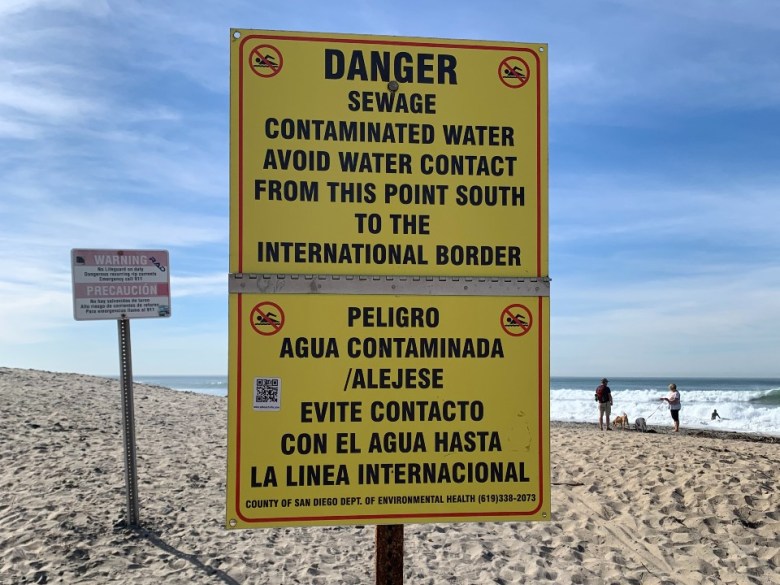
The waters off Imperial Beach did not once meet state health standards in 2023, according to the Surfrider Foundation’s 2023 Clean Water Report released Wednesday.
The South Bay city has been dealing with the consequences of failed infrastructure in the Tijuana River Valley, leading to tons of sewage being pumped directly into the river, flows into the Pacific Ocean.
But Imperial Beach is not alone, as the report finds.
“Years of neglect and underfunding have also left America’s outdated wastewater infrastructure in disrepair, threatening coastal water quality by discharging raw and undertreated sewage into our local waterways and ocean at a rate of over 900 billion gallons every year,” the authors of the report write.
However, the only other high priority beach where volunteers regularly took samples from and didn’t once find waters meeting state health standards was Nawiliwili Stream at Kalapaki Bay on the island of Kauai, Hawaii. This leaves the two in rarified — and polluted — air.
Other California beaches on the Priority Blue Water Task Force list include Linda Mar Beach in Pacifica and San Luis Creek Mouth in San Luis Obispo.
Since the Surfrider Foundation was founded in 1984, improving coastal water quality has been one of the organization’s top priorities.
“Everyone deserves access to clean water to surf, swim, and play in. That’s why Surfrider advocates for strong laws and sufficient funding to monitor and protect water quality,” said Mara Dias, Surfrider’s water quality initiative senior manager. “We ensure that people have access to the information they need to protect themselves and the health of their families when recreating at the beach and in our coastal waterways.”
According to the foundation, nearly 10 trillion gallons of untreated stormwater runoff flow into U.S. waterways every year, carrying a cocktail of pollutants including road dust, oil, animal waste, fertilizers, and other chemicals.
The untreated sewage and stormwater can contain bacteria, viruses and parasites that make people sick, as well as pollute waterways with excess nutrients, wreaking havoc on coastal ecosystems.
In April, the Tijuana River was named one of the country’s “most endangered,” according to a report released by environmentally focused nonprofit American Rivers.
The 120-mile long intermittent river was ranked No. 9 on that report. According to the U.S. Environmental Protection Agency, 44% of waterways in the United States are too polluted for swimming or fishing, and freshwater species are going extinct faster than ocean or land species.
The Tijuana estuary, the largest remaining natural coastal wetland in Southern California and one of the few remaining salt marshes, is home to more than 370 types of birds and multiple endangered species.
However, transboundary flows of toxic waste and sewage can measure 35-50 million gallons per day and the beaches of Imperial Beach have been shut down for more than 800 consecutive days as a result.
San Diego’s congressional delegation secured significant funding intended to make improvements to the treatment plant. This funding includes $156 million for the U.S. International Boundary Water Commission allocated in March and $300 million in 2019 to expand the South Bay International Wastewater Treatment Plant from 25 million gallons per day to 50 million gallons per day.
But action needs to be taken more urgently, the Surfrider report reads.
“The growing threats from climate change to our coasts, including sea level rise and more frequent extreme weather events that generate massive amounts of stormwater, are already causing water infrastructure failures and sewage spills with increasing frequency,” the authors write. “Significant investments need to be made now to prepare our coastal communities to become more resilient and to better manage our water resources.”
City News Service contributed to this article.
